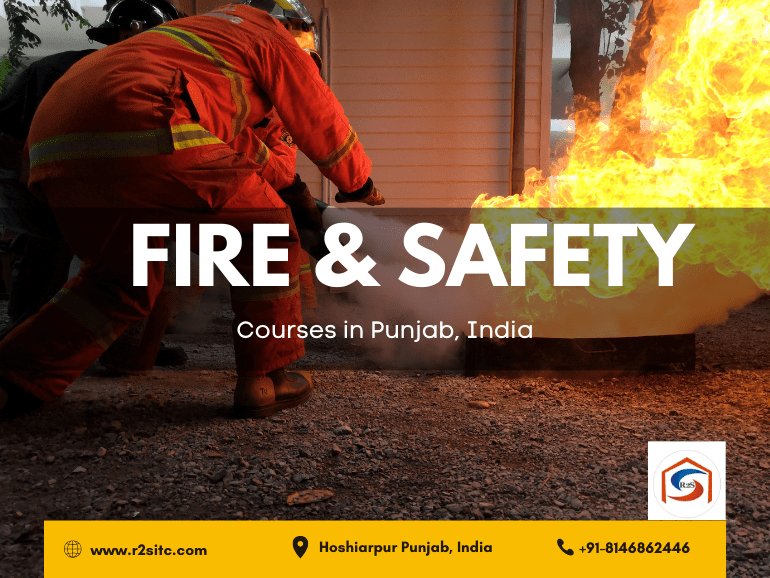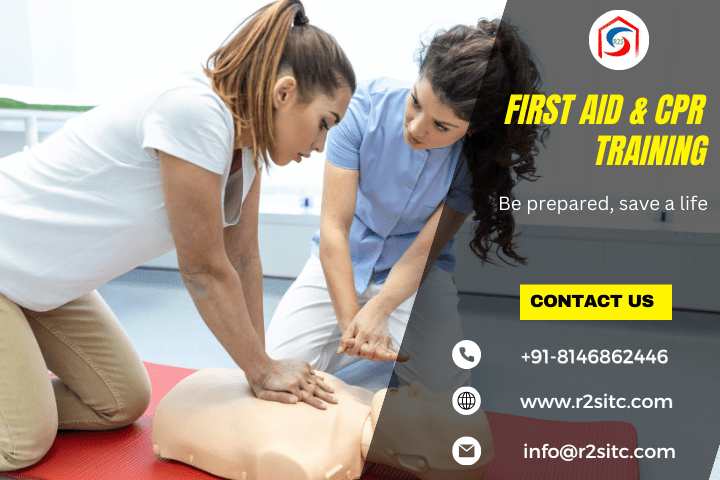Fire accidents can happen anywhere, anytime. That’s why it’s important to have trained professionals who know how to keep us safe. If you’re interested in learning how to prevent and manage fire emergencies, then a fire and safety course could be perfect for you. In this blog post, we’ll explore everything you need to know about fire and safety courses in Punjab, India, in simple language that everyone can understand.
Table of Contents:
- Eligibility
- Demand & Scope
- Why Choose R2SITC for Diploma in Fire and Safety Course in Punjab, India?
- Job Opportunities: Fire and Safety Courses
- Job Profiles to Consider
- What is a Fire and Safety Course?
- Why Should You Learn Fire and Safety?
- Choosing the Right Fire and Safety Course
- Benefits of Studying at R2SITC
- Job Opportunities in Fire and Safety
What is a Fire and Safety Course?
A fire and safety course teaches you how to prevent fires and handle emergencies safely. You’ll learn about fire hazards, how to use firefighting equipment, and how to keep people safe in case of a fire.
Why Should You Learn Fire and Safety?
Learning fire and safety can help you protect yourself and others from harm. You’ll gain valuable skills that can save lives and make a difference in your community. Plus, it’s a rewarding career where you can help people every day.
Choosing the Right Fire and Safety Course
When choosing a fire and safety course, look for one that offers practical training and certification. Make sure the course covers topics like fire prevention, first aid, and emergency response. It’s also important to consider the reputation of the training institute and the experience of the instructors.
Benefits of Studying at R2SITC
At R2SITC, you’ll get top-notch training from experienced professionals. Our courses are designed to give you practical skills that you can use in real-life situations. Plus, our certifications are recognized by employers across industries, giving you an edge in the job market.
Job Opportunities in Fire and Safety
After completing a fire and safety course, you’ll have many job opportunities in Fire and Safety available to you. You could work as a fire safety officer, safety supervisor, or safety engineer in industries like construction, manufacturing, and healthcare.
Conclusion:
Fire and safety courses are a great way to learn important skills that can help you save lives and protect your community. Whether you’re looking for a rewarding career or just want to make a difference, a fire and safety course could be the perfect choice for you. So why wait? Enroll in a course today and start your journey towards a safer future.




